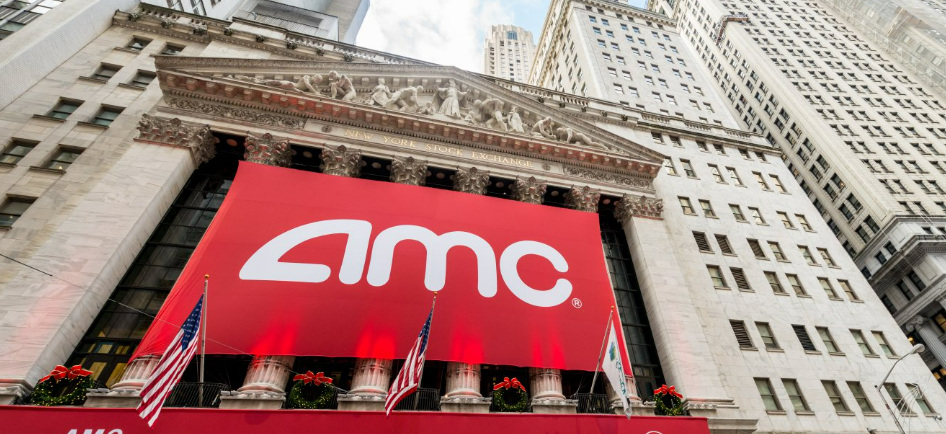
Charlie Brooks
Jun 30, 2022 14:38
Mega cap stocks are favored by billionaires, hedge funds, and other institutional investors. First and foremost, mega caps are established enterprises that are market leaders in their respective sectors. Second, the mega liquidity of megacaps enables large investors to buy or sell significant holdings with relative ease.
In addition to being some of the nation's most well-known corporations, mega caps are also some of the experts' favorite stocks.
As with any asset, investors must weigh the benefits and downsides of mega sized stocks. Understanding how they operate and what makes them unique from other kinds of stocks might assist you in deciding whether to include them in your portfolio.
At one extreme of the market capitalization continuum, mega cap stocks represent the very biggest publicly traded corporations. Mega cap typically refers to corporations having a market capitalization of above $200 billion. However, the precise criteria vary based on market circumstances. Capitalization on the market is a typical approach for classifying publicly traded enterprises. Market capitalization or market cap estimates the worth of a firm by multiplying the current market price of a single share by the total number of outstanding shares.
Consider a corporation whose stock is valued at $50 per share and has 10 million outstanding shares. Using the calculation of $50 x 10,000,000, the firm's market capitalization would be $500 million.
Companies are often placed in one of three groups depending on their market capitalization:
Small cap: Market value of $250 million to $2 billion
Mid cap: Market value of $2 billion to $10 billion
Large cap: Market value above $10 billion
While the majority of businesses fall into one of these three categories, there are exceptions at both ends of the scale. Microcap stocks are the smallest of the small cap stocks, whereas mega cap stocks represent the biggest corporations.
As previously said, market capitalization classifies corporations as small, medium, large, and mega caps. The primary distinction between mega and huge corporations is their market capitalization. While mega corporations have market capitalizations of $200 billion or more, major corporations have market capitalizations between $10 and $200 billion.
Large corporations are enormous and mega caps, but mega caps are the biggest. They are dominating in their industry and boast expensive stock values. Common investors include hedge funds, mutual funds, endowments, and pensions.
Mega cap stocks have a market capitalization considerably beyond big cap stocks' $10 billion thresholds. These firms have market capitalizations of at least $1 trillion. While many investors find smaller, faster-growing firms to be more interesting, investors who take the time to comprehend mega large stocks may generate substantial returns. In addition, since these giant corporations tend to be less volatile than their smaller counterparts, they may serve to diversify a portfolio of smaller stocks while still contributing to long-term share price appreciation. Their primary benefit is that they are safer investments than smaller firms since they are more established and have more consistent earnings streams. As a result, mega size stocks often beat small cap stocks during bad markets. Mega cap stocks would appeal to diverse investors because of their normally lower volatility and more predictable future returns than smaller stocks.
Apple has the greatest market capitalization in the world with more than $2 trillion, followed by Microsoft, Amazon, and Alphabet, the parent company of Google. While the stocks with the biggest market capitalization are all technology businesses, there are other sectors with mega cap stocks, such as healthcare and consumer goods.
The number of mega cap stocks fluctuates based on market circumstances. Since the beginning of the pandemic, numerous mega size stocks have increased in value because they have been able to profit from the changes in customer behavior. As some investors sought the protection of huge cap stocks, other mega size stocks increased.
There are several types of excellent mega cap stocks. Some, such as MercadoLibre, are former small-cap growth stocks that kept growing; others, such as Starbucks, are established players in industries that are difficult to enter on a large scale; and others, such as Walmart, are versatile giants with a long history of strong management and consistent growth.
Almost every leading mega-cap firm has observable competitive advantages, a strong brand, competent management, and a track record of rewarding investors via dividends, share buyback schemes, or long-term share price increases.
If you can maintain investment for at least five years and want stocks with moderate volatility, mega cap stocks may be a suitable choice. Adding a few steady mega caps to a portfolio dominated by unpredictable growth stocks may be a prudent way to diversify without considerably losing growth prospects.
Even though mega cap stocks are often those of firms that "everyone recognizes," it is necessary to perform your research before investing. You may also consider adding a large-cap ETF or mutual fund to your portfolio.
There are numerous compelling arguments for using mega cap stocks in your asset allocation approach.
Investing in diverse industries and market capitalizations mitigates risk since economic fluctuations may impact smaller, mid-sized, and bigger enterprises differently.
Established mega cap corporations are among the most stable in the economy and may be better equipped to endure a market downturn than smaller or younger firms that lack financial reserves or strong brand recognition.
Some mega cap stocks give investors dividends because they do not need to spend earnings on expansion. If reinvested, this may create a supplementary income source or accelerate portfolio development.
Despite the fact that there are factors that make mega cap firms appealing to investors, it is essential to recognize the possible drawbacks:
Since many megacaps have completed the majority of their growth, there may be little room for their stock prices to rise.
Market capitalization represents the perceived worth of stock on the stock market, not its intrinsic value. Therefore, mega cap status alone is not a trustworthy measure of a company's underlying financial strength.
Thermo Fisher Scientific (TMO, $639.76) is sometimes referred to as the "Amazon of the healthcare business" because of the extensive range of life sciences goods, analytical equipment, and laboratory tools.
Therefore, Thermo Fisher has been very aggressive in the battle against COVID-19, which has increased its visibility and investor interest. Indeed, TMO stock is up over 37% year-to-date, and this outperforms the S&P 500 by around 12 percentage points.
Bulls remark that there is more to TMO than the boost it receives from the struggle against COVID-19.
The business is investing its large cash flow in product development, capacity expansions, and acquisitions, according to David Toung, an analyst with Argus Research who rates the stock a Buy. We think that these efforts, together with the strength of the core company (minus COVID-19 testing revenue), will fuel growth after the pandemic.
According to S&P Global Market Intelligence, of the 22 analysts providing ratings on the stock, 15 rates it as a Strong Buy, four rates it as a Buy, two rates it as a Hold, and one rates it as a Sell. They anticipate that the company's earnings per share (EPS) will increase by 13,1 percent each year on average over the next three to five years.
Sam Walton founded Walmart in 1945 when he established his first discount shop. Since then, the firm has become the biggest retailer in the world, servicing over 230 million people every week. This year's revenue will be around $595 billion.
Walmart published earnings for the first quarter on May 17, 2022, and margins and profits were much lower than anticipated. Adjusted profits per share came in at $1.30, 18 cents less than anticipated. Despite the fact that sales increased 2.4% year-over-year to $141.6 billion, which was $3.55 billion more than anticipated.
Comparable sales increased 3 percent year-over-year and 9 percent on a two-year stacked basis in the United States. The increase in eCommerce was 1% year-over-year and 38% on a two-year stacking basis. Sam's Club comparable sales increased 10.2 percent year-over-year and 17.4 percent over the last two years.
As a proportion of sales, operating expenditures increased by 45bps, mostly owing to higher salaries in the United States. The operating income of Walmart US decreased from $5.5 billion to $4.5 billion. Walmart International's revenue decreased from $1.2 billion to $0.8 billion, while Sam's Club's revenue decreased from $0.6 billion to $0.5 billion.
With oil and natural gas prices on the rise, Chevron (CVX) is one of the most recognizable companies in the energy industry. Chevron can trace its origins back to 1879 when it was created as Pacific Coast Oil during the California Gold Rush.
Chevron sells gasoline under the brand names Chevron, Texaco, and Caltex. In addition, it possesses a global network of oil, gas, and refined oil pipelines.
It comes as no surprise that CVX stock is doing well this year due to increased gas and oil prices and the Russia-Ukraine war. Chevron is up 40 percent so far this year and is expected to continue rising.
The corporation revealed that its first-quarter profitability increased by more than fourfold, reaching $6.3 billion on sales of $54.37 billion. Profit per share was $3.36, and analysts had anticipated sales of $47.94 billion and earnings per share of $3.27.
In comparison, the Corporation recorded $32.03 billion in sales and $1.37 billion in earnings during the same quarter a year earlier.
Chevron, which has a market value of $323 billion, has a current dividend yield of 3.5% and has grown its dividend payment every year for the last 35 years.
The average price objective for CVX stock is $175.09, based on the average recommendation of 28 stock analysts. This is a gain of almost 6.5 percent for CVX stock.
MasterCard is the global leader in electronic payment processing. The organization collaborates with 250,000 financial institutions worldwide to provide an electronic payment network. MasterCard has around 3 billion active credit and debit cards.
MasterCard increased its quarterly dividend by 11.4% to $0.49 on November 30, 2021.
MasterCard released its first-quarter results for the period ending March 31, 2022, on April 28, 2022. The revenue increase of 23,8% to $5,2 billion was $300 million more than anticipated. Adjusted profits per share of $2.76 compared favorably to the preceding year's earnings per share of $1.74 and were $0.60 more than anticipated.
Global gross dollar volumes grew 17 percent to $1.9 trillion, with the United States increasing 14 percent and the rest of the world increasing 19 percent. The number of cross-border transactions increased by 53%, whereas switched transactions increased by 22%. Cards in circulation increased by 4% to a little under 3 billion. Due to acquisitions, labor expenditures, advertising, and data-processing costs, expenses climbed by 11 percent.
The recalculated operating margin increased by 460 basis points to 57.5%. During the quarter, the business repurchased 6.8 million shares at an average price of $353. MasterCard has repurchased an additional 1.7 million shares at an average price of $352 so far this quarter. The company's remaining share buyback authorization is $8.9 billion.
JPMorgan Chase (JPM) is the biggest of the United States' major banks. With a market value of $362 billion, the bank is among companies that might benefit from the Federal Reserve's interest rate hikes.
Net interest margin, or the difference between the interest earned on assets and the interest paid to depositors and creditors, is affected by a rise in interest rates. When interest rates climb, banks gain more money since the gap between these two points also grows.
JPMorgan has posted revenue for the first quarter of $31.59 billion, above analysts' projections of $30.86 billion. EPS came up at $2.76, above forecasts of $2.69 per share.
The conflict in Ukraine had a significant impact on profits, as well as the cost of bad loans. JPM said that its revenue was down 5% year-over-year, and its earnings were down a stunning 42%.
However, there are still several reasons to value JPM stock. It provides a dividend yield of 3.2% and has grown its dividend distribution for eleven consecutive years.
In addition, 27 analysts have given JPM a consensus "buy" recommendation, with an average price objective of $158.76 per share. This is a 27 percent increase.
UnitedHealth traces back to 1974 when a group of health care experts seeking to broaden consumer healthcare alternatives created Charter Med. In the decades thereafter, UnitedHealth has accomplished this feat and currently provides tens of millions of people with worldwide healthcare services via a vast assortment of products.
UnitedHealth and Optum are the two largest reporting segments for the corporation. Individuals, employers, and Medicare/Medicaid participants get global healthcare benefits via the former. The Optum sector is a services company that aims to reduce healthcare expenses and improve client results. UnitedHealth generates around $321 billion in yearly sales, making it one of the biggest firms in the United States by either metric.
UnitedHealth announced profits for the first quarter on April 14, 2022, with results again above expectations. The company's adjusted profits per share of $5.49 exceeded expectations by 14 cents. Similarly, revenues increased 14 percent year-over-year to $80.1 billion, above expectations by $1.3 billion.
UnitedHealthcare's revenue increased by 13.6% year-over-year to $62.6 billion. Despite the segment's addition of 1.5 million net subscribers over the preceding year, operating profitability decreased from $4.1 billion to $3.8 billion. Optum's revenue increased by 19 percent to $43.3 billion, while operating income increased by the same percentage to $3.2 billion. This year, the business anticipates adjusted earnings per share between $21.20 and $21.70.
There are two approaches to including mega cap stocks in your portfolio if you are aware of the associated investing risk and possible returns. You may invest in mega cap stocks individually or via an investing vehicle, such as a mutual fund or exchange-traded fund (ETF), that owns mega size stocks.
Individual stock purchases enable you to select which mega cap companies to invest in. However, this may need a more hands-on approach since you will need to investigate specific firms.
Investing in a thematic ETF that focuses on mega size stocks might be a less complicated approach to diversifying with bigger companies. This helps you to increase your portfolio's exposure to mega cap stocks.
ETFs may be traded on an exchange much like stocks, providing more liquidity and flexibility than conventional mutual funds. ETFs may be more tax-efficient than mutual funds due to their lower turnover rates. Depending on the mega cap ETF you pick, the fee ratio may be much lower than that of regular mutual funds.
Mega-cap stocks provide stability and the possibility of dividend income, but they may have a lesser upside than smaller stocks with greater possibilities for growth. Your investing objectives, risk tolerance, and time horizon will determine the position of mega-cap stocks in your portfolio.

Jun 29, 2022 16:26

Jun 30, 2022 16:31